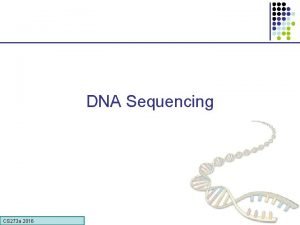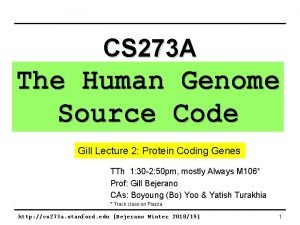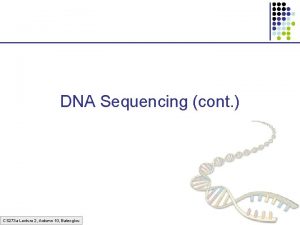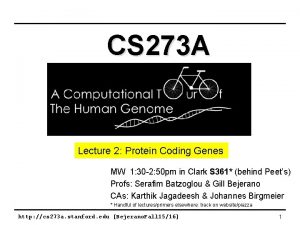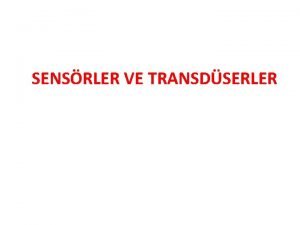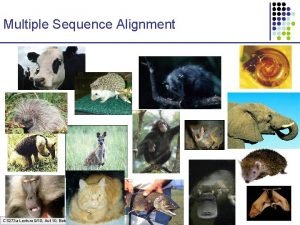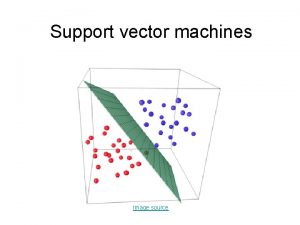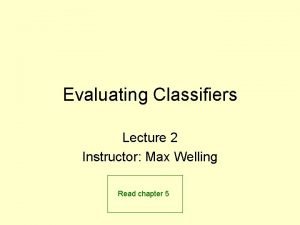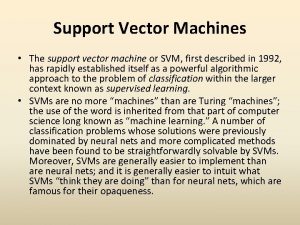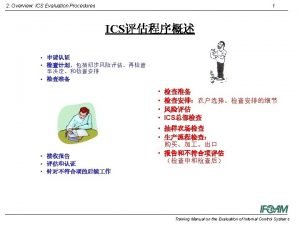Support Vector Machines Instructor Max Welling ICS 273















- Slides: 15

Support Vector Machines Instructor Max Welling ICS 273 A UCIrvine

Philosophy • First formulate a classification problem as finding a separating hyper-plane that maximizes “the margin”. • Allow for errors in classification using “slack-variables”. • Convert problem to the “dual problem”. • This problem only depends on inner products between feature vectors which can be replaced with kernels. • A kernel is like using an infinite number of features.

The Margin • Large margins are good for generalization performance (on future data). • Note: this is very similar to logistic regression (but not identical).

Primal Problem w • We would like to find an expression for the margin (a distance). • Points on the decision line satisfy: • First imagine the line goes through the origin: Then shift origin: Choose

Primal Problem w • Points on support vector lines (dashed) are given by: • If I change: Thus we can choose the equations are still valid. without loss of generality.

Primal Problem w • We can express the margin as: 2/||w|| is always true. Check this also for b in (-1, 0). • Recall: we want to maximize the margin, such that all data-cases end up on the correct side of the support vector lines.

Primal problem (QP) alternative derivation margin alternative primal problem formulation

Slack Variables • It is not very realistic to assume that the data are perfectly separable. • Solution: add slack variables to allow violations of constraints: • However, we should try to minimize the number of violations. We do this by adding a term to the objective:

Features • Let’s say we wanted to define new features: The problem would then transform to: • Rationale: data that is linearly non-separable in low dimensions may become linearly separable in high dimensions (provided sensible features are chosen).

Dual Problem • Let’s say we wanted very many features (F>>N), or perhaps infinitely many features. • In this case we have very many parameters w to fit. • By converting to the dual problem, we have to deal with exactly N parameters. • This is a change of basis, where we recognize that we only need dimensions inside the space spanned by the data-cases. • The transformation to the dual is rooted in theory of constrained convex optimization. For a convex problem (no local minima) the dual problem is equivalent to the primal problem (i. e. we can switch between them).

Dual Problem (QP) • The should be interpreted as forces acting on the data-items. Think of a ball running down a hill (optimizing w over ||w||^2). When it hits a wall, the wall start pushing back, i. e. the force is active. If data-item is on the correct side of the margin: no force active: If data-item is on the support-vector line (i. e. it is a support vector!) The force becomes active: If data-item is on the wrong side of the support vector line, the force is fully engaged: if no slack variables

Complementary Slackness • The complementary slackness conditions come from the KKT conditions in convex optimization theory. • From these conditions you can derive the conditions on alpha (previous slide) • The fact that many alpha’s are 0 is important for reasons of efficiency.

Kernel Trick • Note that the dual problem only depends on • We can now move to infinite number of features by replacing: • As long as the kernel satisfies 2 important conditions you can forget about the features • Examples:

Prediction • If we work in high dimensional feature spaces or with kernels, b has almost no impact on the final solution. In the following we set b=0 for convenience. • One can derive a relation between the primal and dual variables (like the primal dual transformation, it requires Lagrange multipliers which we will avoid here. But see notes for background reading). • Using this we can derive the prediction equation: • Note that it depends on the features only through their inner product (or kernel). • Note: prediction only involves support vectors (i. e. those vectors close to or on wrong side of the boundary). This is also efficient.

Conclusions • kernel-SVMs are non-parametric classifiers: It keeps all the data around in the kernel-matrix. • Still we often have parameters to tune (C, kernel parameters). This is done using X-validation or by minimizing a bound on the generalization error. • SVMs are state-of-the-art (given a good kernel). • SVMs are also slow (at least O(N^2)). However approximations are available to elevate that problem (i. e. O(N)).






